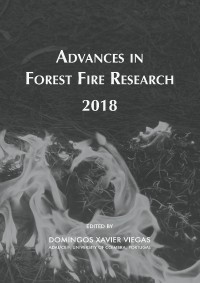Please use this identifier to cite or link to this item:
https://hdl.handle.net/10316.2/44540| DC Field | Value | Language |
|---|---|---|
| dc.contributor.author | Santos, João Francisco Labres dos | |
| dc.contributor.author | Machado, Igor Eloi Silva | |
| dc.contributor.author | Soares, Ronaldo Viana | |
| dc.contributor.author | Batista, Antonio Carlos | |
| dc.contributor.author | Neves, Pedro Cordeiro | |
| dc.contributor.author | Tetto, Alexandre França | |
| dc.date.accessioned | 2018-11-09T12:07:14Z | |
| dc.date.accessioned | 2020-09-06T17:31:14Z | - |
| dc.date.available | 2018-11-09T12:07:14Z | |
| dc.date.available | 2020-09-06T17:31:14Z | - |
| dc.date.issued | 2018 | - |
| dc.identifier.isbn | 978-989-26-16-506 (PDF) | |
| dc.identifier.uri | https://hdl.handle.net/10316.2/44540 | - |
| dc.description.abstract | The Cerrado (Brazilian savanna) presents species with adaptations to fire and, therefore, is considered a fire dependent ecosystem. On the other hand, the Mixed Ombrophilous Forest (FOM), characterized by the presence of higher levels of moisture, is considered a fire sensitive ecosystem. Flammability is defined as the ability of the fuel to ignite after being subjected to an increase of caloric energy, until the material reaches the ignition stage, after the reduction in the moisture content. The objective of this research was to test and classify species from the Cerrado and the Araucaria Forest (FOM) according to their flammability. The following species from the Cerrado were tested: Vatairea macrocarpa, Myrcia splendens, Davilla elliptica, Ouratea hexasperma, Copaifera langsdorffi, Diospyros hispida. The tested species from the FOM were: Ocotea puberula, Araucaria angustifolia, Allophylus edulis, Cupania vernalis and Luehea divaricata. Using an epirradiator, 50 replications of burning for each species were carried out. Each tested sample consisted of 1.0 ± 0.1 g of green fuel material less than 0.7 cm of diameter, containing leaves and branches. The measures parameters were: Time of ignition (Ti), combustion duration (Dc), ignition frequency (Fi) and flame height (Hc). The species were classified according to their flammability rating value (Vi). To validate the classification and determine which parameters were the main flammability inductors, a Principal Component Analysis (PCA) was carried out. Araucaria angustifolia presented poor flammability, due to the higher ignition time. Allophylus edulis presented the higher flammability among the FOM species, and the ignition frequency was the decisive parameter to this classification. The species from the Cerrado showed similar values of combustion duration, except Davilla elliptica and Myrcia splendens, which presented intermediate values of ignition time. Vatairea macrocarpa and Copaifera langsdorffi, were highly and extremely flammable, respectively. The flammability values validated the hypothesis that the Cerrado species present higher flammability when compared to the FOM species. The Principal Components Analysis was effective in the results validation and allowed to explain what parameters determined the flammability. | eng |
| dc.language.iso | eng | - |
| dc.publisher | Imprensa da Universidade de Coimbra | por |
| dc.relation.ispartof | http://hdl.handle.net/10316.2/44517 | por |
| dc.rights | open access | - |
| dc.subject | Principal component analysis | eng |
| dc.subject | ignition | eng |
| dc.subject | Cerrado | eng |
| dc.subject | Araucaria forest | eng |
| dc.title | Flammability of native species of two Brazilian ecosystems | por |
| dc.type | bookPart | por |
| uc.publication.firstPage | 227 | - |
| uc.publication.lastPage | 231 | - |
| uc.publication.location | Coimbra | por |
| dc.identifier.doi | 10.14195/978-989-26-16-506_23 | - |
| uc.publication.section | Chapter 2 - Fuel Management | por |
| uc.publication.digCollection | PB | por |
| uc.publication.orderno | 23 | - |
| uc.publication.area | Ciências da Engenharia e Tecnologias | por |
| uc.publication.bookTitle | Advances in forest fire research 2018 | - |
| uc.publication.manifest | https://dl.uc.pt/json/iiif/10316.2/44540/204023/manifest?manifest=/json/iiif/10316.2/44540/204023/manifest | - |
| uc.publication.thumbnail | https://dl.uc.pt/retrieve/11057117 | - |
| uc.publication.parentItemId | 55072 | - |
| uc.itemId | 68800 | - |
| item.grantfulltext | open | - |
| item.fulltext | With Fulltext | - |
| Appears in Collections: | Advances in forest fire research 2018 | |
Files in This Item:
| File | Description | Size | Format | |
|---|---|---|---|---|
| flammability_of_native_species.pdf | 753.69 kB | Adobe PDF |  |
Items in DSpace are protected by copyright, with all rights reserved, unless otherwise indicated.
